8 of the coolest places in Germany to visit on hot summer days
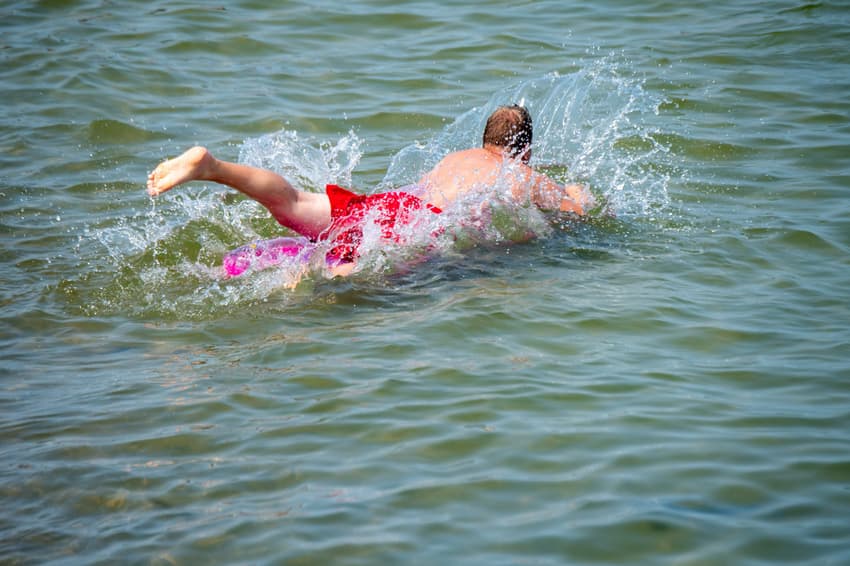
If you've had enough of the hot weather in Germany, here are a few places you can go to cool down (and discover more of the country).
Let's face it: some of us are just not built for the heat. So when temperatures in Germany climb to the late 20s, above 30 - or even around 40C - there is only one place we want to be: the fridge.
But there are a few other spots where you can seek shelter from the sweltering heat. With temperatures this week set to climb above 30C in some parts of the country, here's a look at the areas you can stay cool in and see the sights of Germany.
Swim in the sea
You probably won't be surprised to hear that temperatures are usually cooler by the coast thanks to the sea breeze.
So we'd recommend heading to a coastal resort in Germany to cool down. At the popular Baltic Sea islands like Rügen, temperatures rarely climb above 25C which is more manageable than the extreme heat that often hits the inland regions.
READ ALSO: Which regions in Germany have the best (and worst) weather?
Best of all, the Ostsee water temperature is around 17-18C in June, July and August, and it even drops below 15C from September. Perfect for those who like a refreshing dip.
Alternatively you could head to the North Sea coast or islands like Sylt or Juist. The water there is usually a few degrees cooler than at the Baltic Sea.
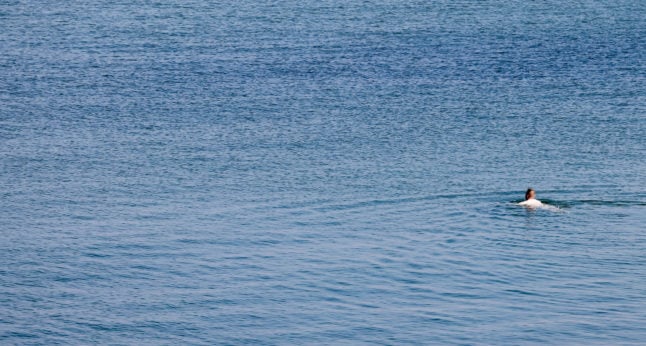
A swimmer bathes in the Baltic Sea near Timmendorfer Strand in Schleswig-Holstein. Photo: picture alliance/dpa | Frank Molter
Get lost in the Oppenheim cellar maze (Kellerlabrynth)
One way to escape the heat is to explore what Germany has to offer below street level. Oppenheim in Rhineland-Palatinate has an amazing network of cellars that people can check out with guided tours. Also known as the 'city under the city', visitors can descend several storeys down to a depth of 500 metres, and learn all about the history of the cellar system which dates back hundreds of years.
The temperature is a constant and cool 17C so there's no chance of overheating.
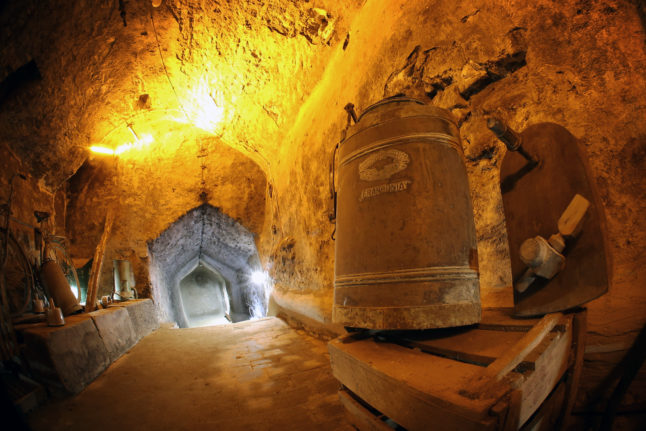
The cellar labyrinth in Oppenheim (Rhineland-Palatinate) under the old town is a great place to cool down and get a history lesson. Photo: picture alliance / dpa | Fredrik von Erichsen
Head to the Dechen Cave (Dechenhöhle) in the Sauerland
One of the most beautiful caves on display in Germany, the Dechenhöle in the Sauerland's Iserlohn in North Rhine-Westphalia is well worth a visit.
Around 360 metres of the 870 metre long cave have been arranged for visitors to explore, and the light shows look mesmerising. The cave was discovered by two rail workers in 1868 who dropped a hammer into a rock crevice. When they were searching for the tool, they discovered the entrance to the dripstone cave.
The temperature of the caves is around 10C all year round so it's ideal for cooling down. In fact, you'll probably need a jacket.
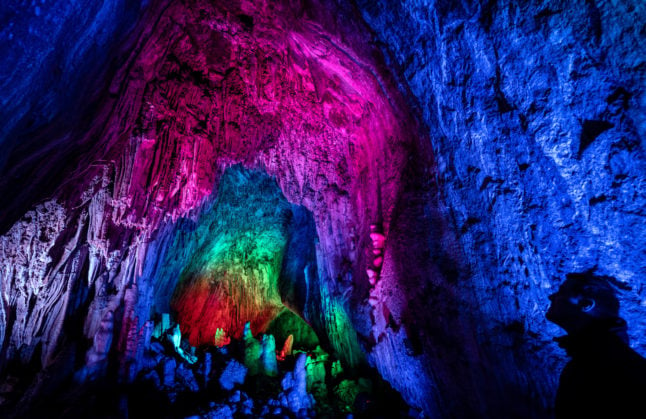
The illuminated Dechenhöle in March 2022. Photo: picture alliance/dpa | Bernd Thissen
Visit a salt mine (Salzbergwerk)
The Salzbergwerk Berchtesgaden is the oldest active salt mine in Germany dating back to 1517, but it's also a unique experience for tourists deep in the Bavarian Alps.
Hop on a miners' train and travel 650 meters into the mountain, where you'll find a large salt cathedral and a miner's slide. The experience includes 3D animations depicting the mining of salt, as well as a boat trip across the underground salt lake.
Explore Berlin underground
If you want to cool down, and learn all about the German capital's history, dive into Berlin's underworld and walk through the tunnels and vaults, as part of tours by Berliner Untervelten E.V.
A jackets or a cosy jumper is recommended: the temperature is usually between 8 and 12C.

Explore hidden parts of the Berlin U-Bahn and underground system of tunnels out of the heat. Photo: picture alliance/dpa | Monika Skolimowska
Drop into the ice cellar (Eiskellar) in Altenberge
This museum is the former ice-storage and fermentation cellar of the old Beuing Brewery in Altenberge. It showcases the history of the small town in the Münsterland region, and has an eerily beautiful setting. It was once one of the largest underground refrigerators in Europe with temperatures of around 8-10C.
Take a dip in a very cold lake
Getting into any water is a great way to cool down during the hot summer months. But you could take it a step further and head to a very cold lake.
Funtensee is a karst lake (which means it formed after caves collapsed) on the Steinernes Meer plateau in the stunning Berchtesgaden National Park, and the area is known for low temperatures. In fact, the coldest temperature ever recorded in Germany was on December 24th, 2001, when the mercury dropped to -45,9C at the Funtensee measuring station.
Luckily, it's not that cold all year round but the water is still pretty chilly in the summer months at around 17 to 18C.
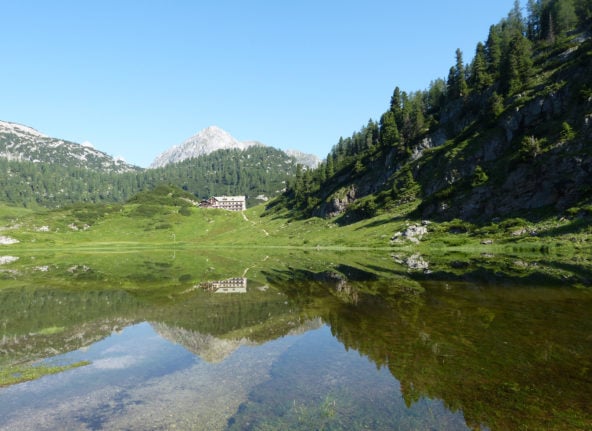
A view of the cold Funtensee. Photo: picture alliance / dpa-tmn | Florian Sanktjohanser
Meanwhile, the water temperature at Frillensee, also in Bavaria, doesn't rise above 10C even in summer. Just dipping your big toe in very cold lakes is enough to cool off.
Climb (or take a cable car) up Germany's highest mountain
Playing in snow and ice while others sweat? Yes, it's possible, way up on the Zugspitze glacier, which is part of Germany's highest mountain, standing at around 2,962 metres above sea level. We recommend taking a tour, which runs from the Sonnalpin glacier restaurant to the edge of the ice on the Northern Schneeferner. The tours are a free service from the Bayerische Zugspitzbahn.
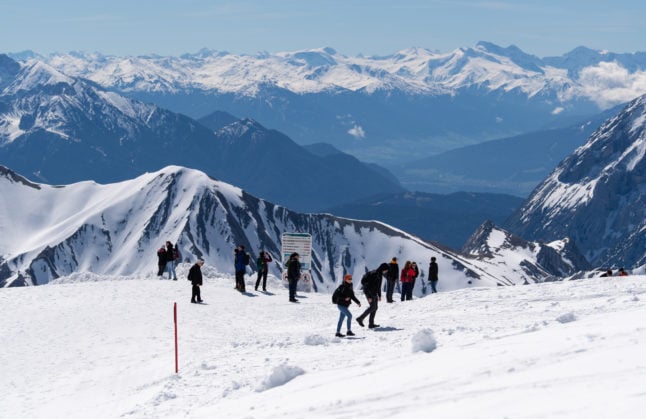
People enjoy stunning weather on the glacier at the Zugspitze in May 2021. Photo: picture alliance/dpa | Sven Hoppe
Visitors can take a train from Garmisch-Partenkirchen, or the station at Eibsee lake, which runs through the 4.5-km-long Zugspitze Tunnel before hopping on a cable car. If the mood takes you, you could also check out Germany's highest church on the Zugspitz Plateau. The Maria Heimsuchung Chapel is a great place to reflect after a day of climbing and exploring the mountain.
Comments
See Also
Let's face it: some of us are just not built for the heat. So when temperatures in Germany climb to the late 20s, above 30 - or even around 40C - there is only one place we want to be: the fridge.
But there are a few other spots where you can seek shelter from the sweltering heat. With temperatures this week set to climb above 30C in some parts of the country, here's a look at the areas you can stay cool in and see the sights of Germany.
Swim in the sea
You probably won't be surprised to hear that temperatures are usually cooler by the coast thanks to the sea breeze.
So we'd recommend heading to a coastal resort in Germany to cool down. At the popular Baltic Sea islands like Rügen, temperatures rarely climb above 25C which is more manageable than the extreme heat that often hits the inland regions.
READ ALSO: Which regions in Germany have the best (and worst) weather?
Best of all, the Ostsee water temperature is around 17-18C in June, July and August, and it even drops below 15C from September. Perfect for those who like a refreshing dip.
Alternatively you could head to the North Sea coast or islands like Sylt or Juist. The water there is usually a few degrees cooler than at the Baltic Sea.

Get lost in the Oppenheim cellar maze (Kellerlabrynth)
One way to escape the heat is to explore what Germany has to offer below street level. Oppenheim in Rhineland-Palatinate has an amazing network of cellars that people can check out with guided tours. Also known as the 'city under the city', visitors can descend several storeys down to a depth of 500 metres, and learn all about the history of the cellar system which dates back hundreds of years.
The temperature is a constant and cool 17C so there's no chance of overheating.

Head to the Dechen Cave (Dechenhöhle) in the Sauerland
One of the most beautiful caves on display in Germany, the Dechenhöle in the Sauerland's Iserlohn in North Rhine-Westphalia is well worth a visit.
Around 360 metres of the 870 metre long cave have been arranged for visitors to explore, and the light shows look mesmerising. The cave was discovered by two rail workers in 1868 who dropped a hammer into a rock crevice. When they were searching for the tool, they discovered the entrance to the dripstone cave.
The temperature of the caves is around 10C all year round so it's ideal for cooling down. In fact, you'll probably need a jacket.

Visit a salt mine (Salzbergwerk)
The Salzbergwerk Berchtesgaden is the oldest active salt mine in Germany dating back to 1517, but it's also a unique experience for tourists deep in the Bavarian Alps.
Hop on a miners' train and travel 650 meters into the mountain, where you'll find a large salt cathedral and a miner's slide. The experience includes 3D animations depicting the mining of salt, as well as a boat trip across the underground salt lake.
Explore Berlin underground
If you want to cool down, and learn all about the German capital's history, dive into Berlin's underworld and walk through the tunnels and vaults, as part of tours by Berliner Untervelten E.V.
A jackets or a cosy jumper is recommended: the temperature is usually between 8 and 12C.

Drop into the ice cellar (Eiskellar) in Altenberge
This museum is the former ice-storage and fermentation cellar of the old Beuing Brewery in Altenberge. It showcases the history of the small town in the Münsterland region, and has an eerily beautiful setting. It was once one of the largest underground refrigerators in Europe with temperatures of around 8-10C.
Take a dip in a very cold lake
Getting into any water is a great way to cool down during the hot summer months. But you could take it a step further and head to a very cold lake.
Funtensee is a karst lake (which means it formed after caves collapsed) on the Steinernes Meer plateau in the stunning Berchtesgaden National Park, and the area is known for low temperatures. In fact, the coldest temperature ever recorded in Germany was on December 24th, 2001, when the mercury dropped to -45,9C at the Funtensee measuring station.
Luckily, it's not that cold all year round but the water is still pretty chilly in the summer months at around 17 to 18C.

Meanwhile, the water temperature at Frillensee, also in Bavaria, doesn't rise above 10C even in summer. Just dipping your big toe in very cold lakes is enough to cool off.
Climb (or take a cable car) up Germany's highest mountain
Playing in snow and ice while others sweat? Yes, it's possible, way up on the Zugspitze glacier, which is part of Germany's highest mountain, standing at around 2,962 metres above sea level. We recommend taking a tour, which runs from the Sonnalpin glacier restaurant to the edge of the ice on the Northern Schneeferner. The tours are a free service from the Bayerische Zugspitzbahn.

Visitors can take a train from Garmisch-Partenkirchen, or the station at Eibsee lake, which runs through the 4.5-km-long Zugspitze Tunnel before hopping on a cable car. If the mood takes you, you could also check out Germany's highest church on the Zugspitz Plateau. The Maria Heimsuchung Chapel is a great place to reflect after a day of climbing and exploring the mountain.
Join the conversation in our comments section below. Share your own views and experience and if you have a question or suggestion for our journalists then email us at [email protected].
Please keep comments civil, constructive and on topic – and make sure to read our terms of use before getting involved.
Please log in here to leave a comment.